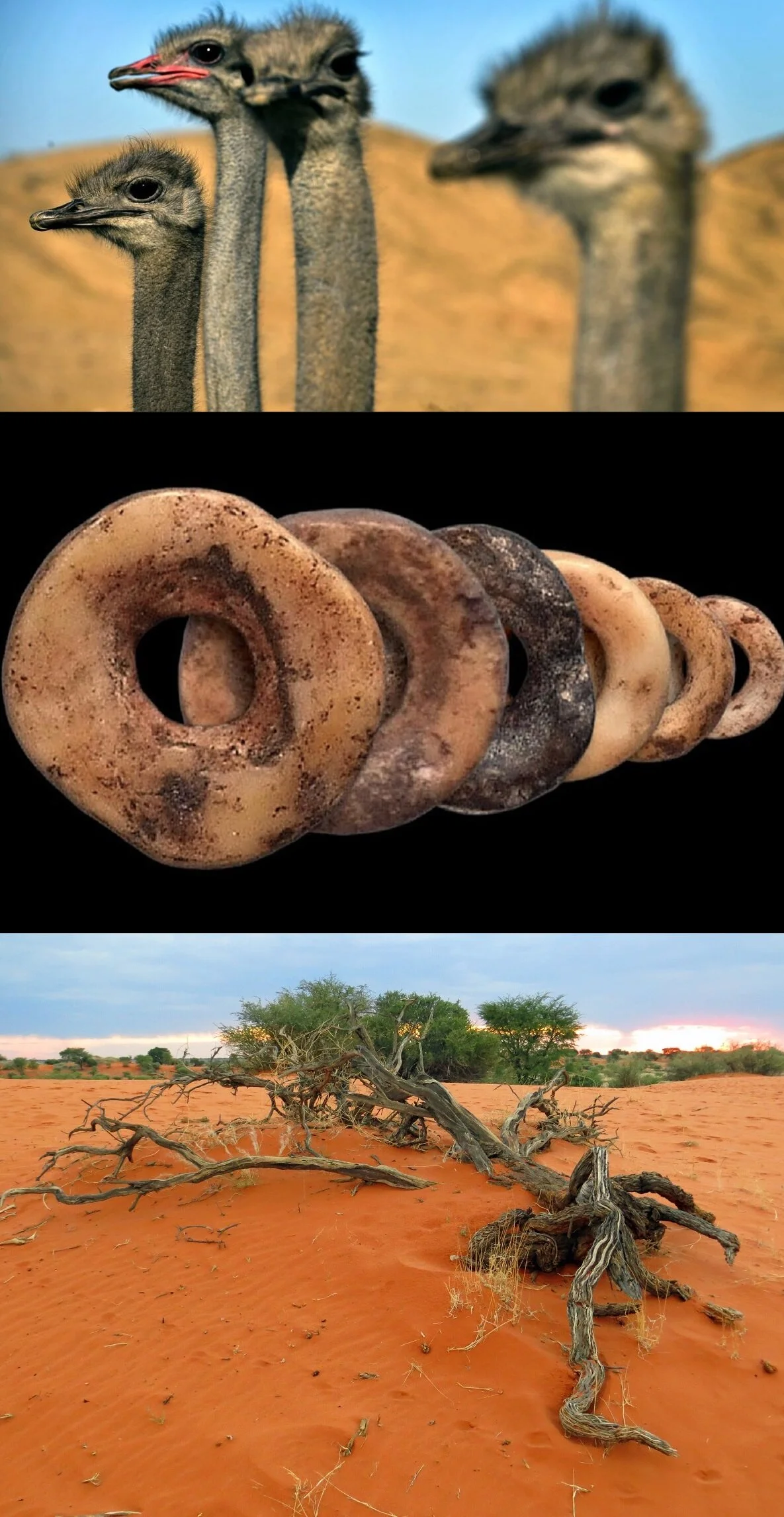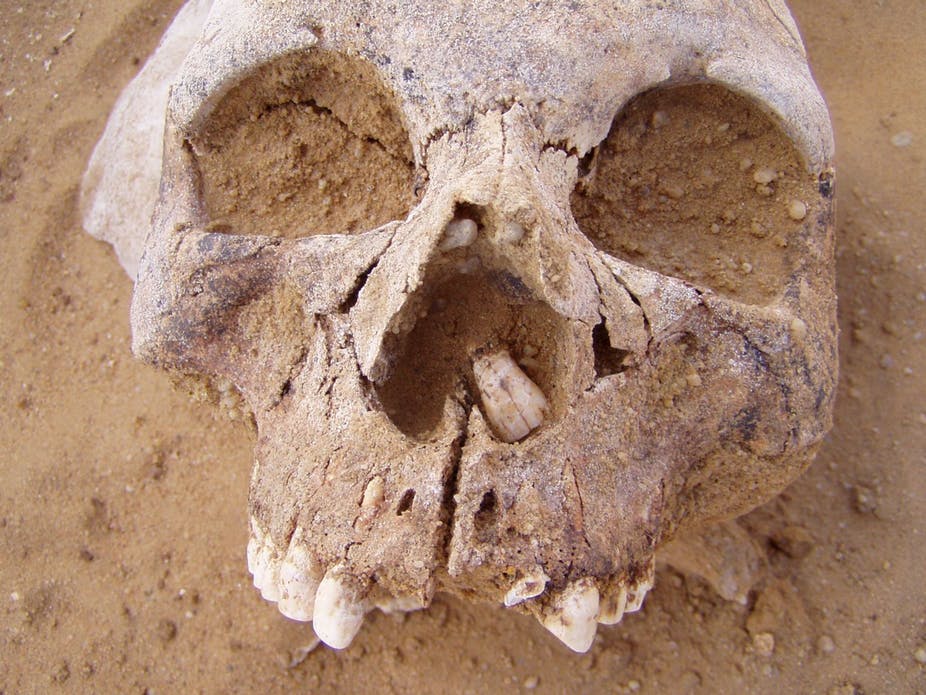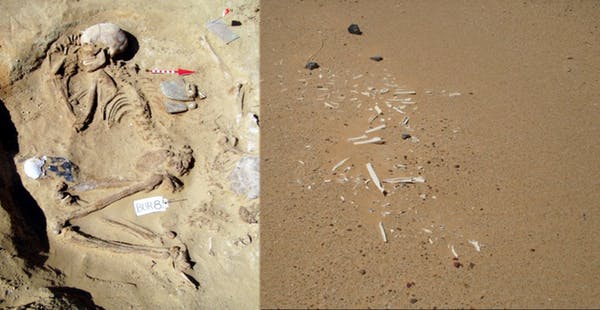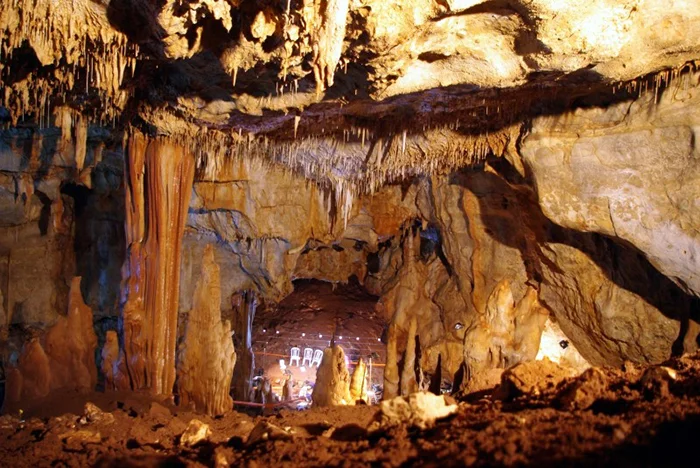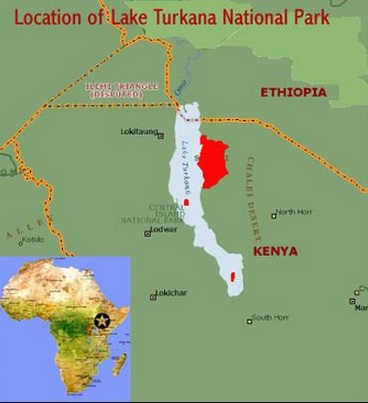Humans of the Kalahari Desert Region Formed Social Networks
/Ostrich eggshell beads were exchanged between ancient hunter-gatherers living in distant, ecologically diverse regions of southern Africa, including deserts and high mountains. (Image courtesy of Brian A. Stewart, Yuchao Zhao, and the University of Michigan Museum of Anthropological Archaeology/John Klausmeyer) via Smithssonian.com
By Megan Gannon. First published at Smithsonianmag.com.
Foragers today who live in southern Africa's Kalahari Desert know that a drought or war can threaten their community's survival. To mitigate these risks, they enter into partnerships with kin in other territories, both near and far, so that if they have a bad year, they can head to another area to gather water and food.
"It's a really good adaptation to a desert environment like the Kalahari, which has huge spatial and temporal variability in resource distribution," says Brian Stewart, an archaeologist at the University of Michigan. "It can be very rainy in one season and in the next absolutely dry, or it can be very rainy in your area and then 10 kilometers away, it's just nothing." According to new archaeological research led by Stewart, this kind of partnership—which acts as a kind of insurance against one side of the partnership having a down year—has been happening for at least 30,000 years old.
In the study, which was published today in the journal Proceedings of the National Academy of Sciences, Stewart and his colleagues examined ostrich eggshell beads found during archaeological excavations at two high elevation rock-shelters in Lesotho, a country enclaved within South Africa. Since the 1970s and 1980s, archaeologists have been finding finished beads made from ostrich eggshells at prehistoric campsites in the area, Stewart says, even though ostriches are notably absent from the region. Based on this fact, and on anthropologists' comparisons with the systems used by modern hunter-gatherers, scientists assumed the ostrich beads to be part of the foragers’ long-distance insurance partnerships. That is, people from many miles away brought the beads and traded them to cement the social ties needed to ensure cooperation when one group of people endured tough times.
"Because of how effective this system is at shoring up risk, it's been used by a lot of archaeologists as a blanket explanation for why people exchange stuff," Stewart says. But, he adds, this idea hadn't really been tested for the archaeological record.
To figure out where the beads from Lesotho were created, Stewart and his colleagues examined their strontium isotope levels. Earth’s crust is abundant with a slightly radioactive isotope of rubidium that, over time, decays into strontium. As a result, different rock formations have different strontium signatures, and local animals can acquire those unique signatures via food and water. In this way, researchers can figure out where a 30,000-year-old ostrich came from.
"Now with globalization and our food moving all over the place—we can eat avocados in December in Boston, for instance—our strontium signatures are all messed up," Stewart says. "In the past, they would have been more pure to where we're actually from."
The study showed that the majority of the beads from the Lesotho rock shelters were carved from the eggshells of ostriches that lived at least 60 miles (100 km) away. A few even came from about 190 miles (300 km) away, including the oldest bead, which was about 33,000 years old. "The really surprising thing was just how far they were coming in from, and how long that long distance behavior was going on," Stewart says.
Archaeologists have documented, in the Kalahari and elsewhere, the deep history of long-distance movements of utilitarian items such as stone tools and ochre pigment, which can be used as a sunscreen or a way to preserve hides. In East Africa, researchers have recorded instances of obsidian tools being carried more than 100 miles (160 km) as early as 200,000 years ago.
"When you have stone or ochre, you don't really know that this exchange is representing social ties," says Polly Wiessner, the anthropologist who first documented the exchange partnerships among the Ju/’hoãnsi people in the Kalahari Desert in the 1970s. "However, these beads are symbolic. This is one of our only sources for such early times to understand social relations."
Wiessner suspects that the closer-range ties—the ones around 60 miles—that Stewart and his colleagues found indeed represent people who pooled risk and shared resources. However, she says, it’s possible that the few examples of beads that came from further away could have been acquired through trade networks.
"Often at the edge of risk-sharing systems, feeder routes extend to bring in goods from other areas by trade or barter and so the recipient does not know people at the source," says Wiessner, who wasn't involved in Stewart’s study but reviewed it for the journal. "It doesn't mean people had face-to-face contact from that far away."
Wiessner points out that people living 30,000 years ago were anatomically modern humans, so she would expect them to have large social networks. Similarly, Lyn Wadley, an archaeologist with the University of the Witwatersrand in South Africa, says, "I think that gift exchange is likely to have a much earlier origin." Wadley, who has studied the social organization of Stone Age hunter-gatherers but wasn't involved in the new study, also found the results convincing.
The new study suggests that the exchange network would have spanned at least eight bioregions, from arid scrubland to subtropical coastal forests. Stewart and his colleagues speculate that the system may have arisen during a period of climate instability, when access to a diversity of resources would have been crucial.
"This is just another piece in the puzzle of the incredible flexibility of our species," Stewart says. "We are able to innovate technologies that just make us so good at adapting very quickly to different environmental scenarios."

